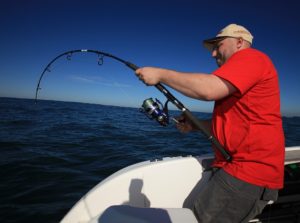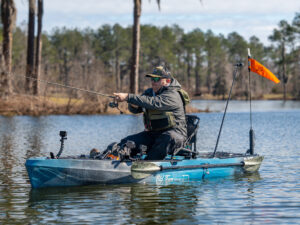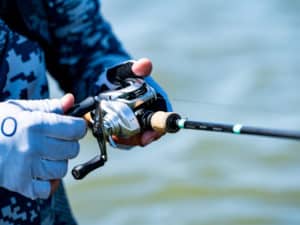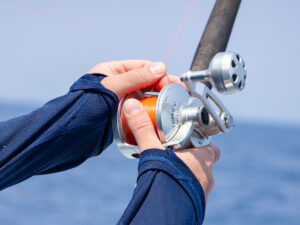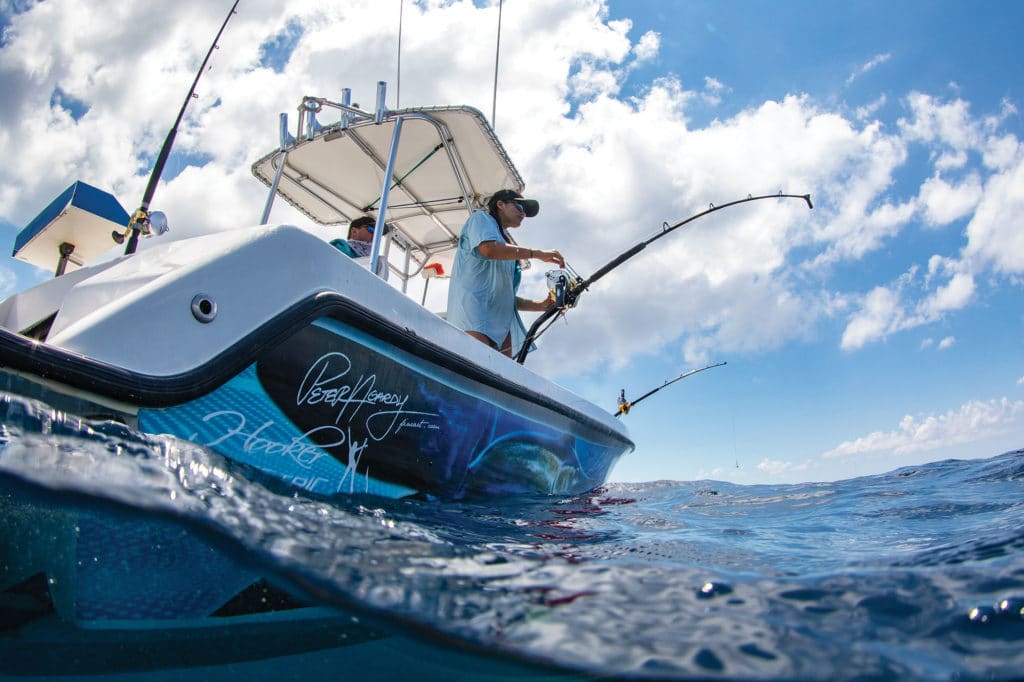
Electric reels can make quick work of pulling up fish from the bottom in 300 to 1,800 feet of water, but anglers increasingly seek something more sporting.
They prefer to hand-crank their fish, especially daytime swordfish. As a result, electric reels featuring a switch to allow instant manual fishing are becoming more popular.
Those reels provide the best of both worlds because sometimes an angler needs the power of an electric motor to take over when he gets tired or the bait gets mangled and must be brought up to the boat along with a 10- or 15-pound weight, which might require 20 to 40 minutes or more if reeled up by hand.
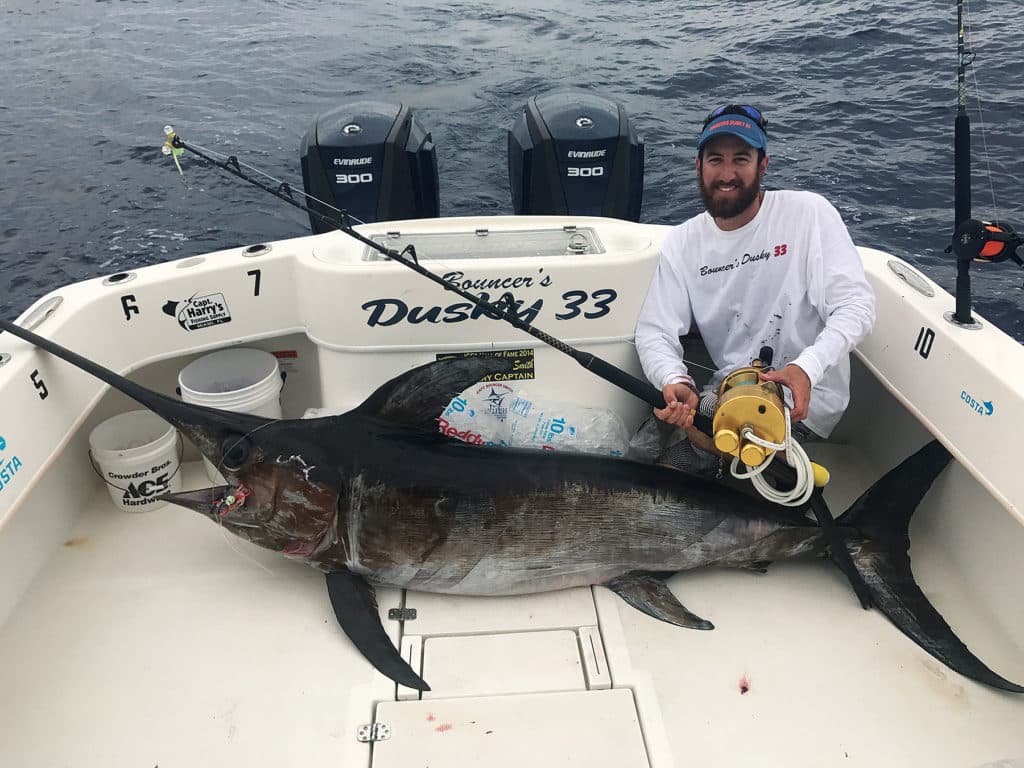
Power-Assisted Popularity
Some of the most used reels — especially in South Florida, where daytime swordfishing was pioneered in the United States — are made by Dolphin Electreel and Hooker Electric. Both feature popular models of Penn and Shimano big-game reels fitted with electric motors. Shimano itself, as well as Daiwa, offer several types of power‑assisted reels.
Tom Sandstrom, an engineer, designed the Hooker Electric reel after being frustrated after his brand-name electric reel kept breaking. His Oakland Park, Florida, company offers reels with detachable motors and others with non-detachable motors. He says sales of the detachable reels have “picked up tremendously over the last year and a half. I think a lot of these guys who have been doing the daytime swordfishing have been pressing the button, and they got sick of it.”
He adds that the detachable reels are ideal for captains and anglers seeking IGFA records. With the motor off, the reel can be used to manually reel in record fish. If there’s no bite and the weight stays on, Sandstrom says the angler can reattach the motor to reel up the rig.
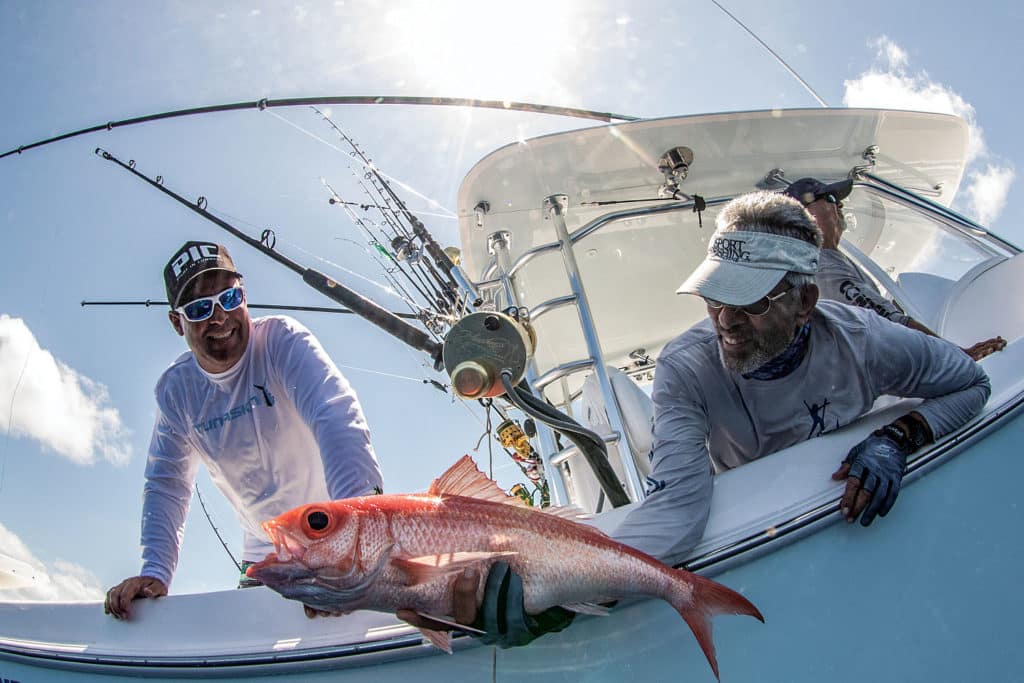
However, according to IGFA rules, if a reel is used electrically one time, for the rest of that day it’s considered an “electric reel,” even if the motor is detached and it can function only manually. That’s why Sandstrom adds for anyone interested in setting IGFA records from fish hooked in the abyss: “You could buy five detachable reels, put down the first bait, and if you don’t get a bite, put the motor on and reel it up, and put that one away.”
Zsolt Szekely, the vice president of Dolphin Electreel in Bradenton, Florida, says his company began making power-assisted reels 28 years ago and was the first to make one with a manual override. The reels can be hand-cranked, but even so, those catches would not count for IGFA records. The same goes for the Shimano and Daiwa reels, even if they’re being used manually and are not plugged in, according to IGFA rules.
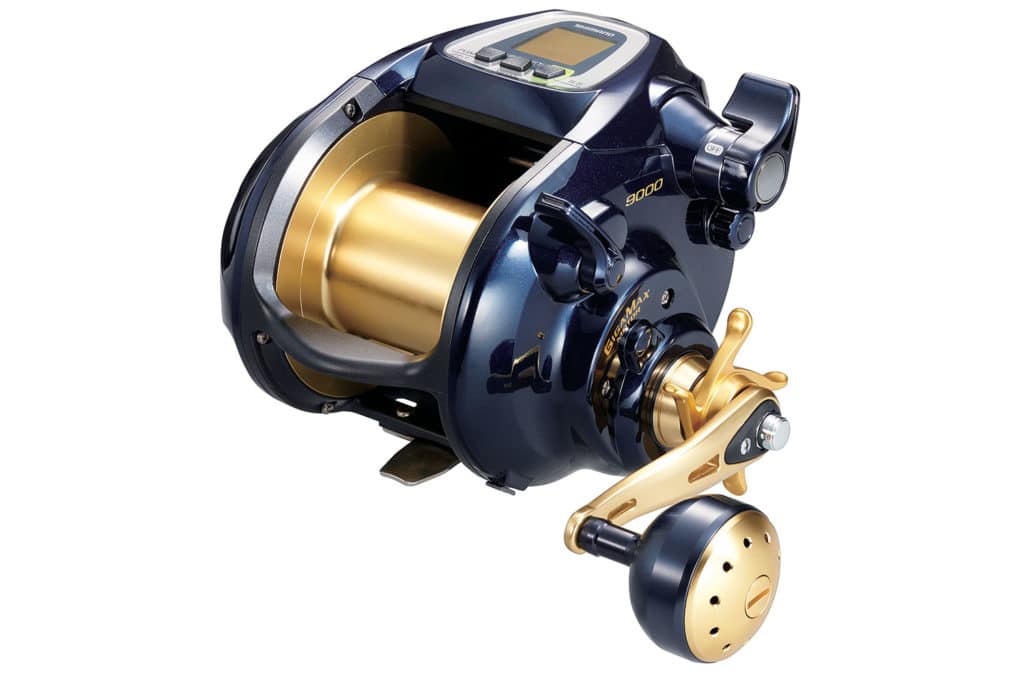
Reel Options
In addition to its modified Penn and Shimano reels, Dolphin (dolphinelectreel.com) also makes non-detachable motors for Avet EX50 and EX80 reels, and will be making motors for Accurate reels in 2019. The Penn models include International 50s, 70s, 80s and 130s. The company also modifies Shimano Tiagra 50s, 80s and 130s. Dolphin sells complete reels with motors, or for a lower price, anglers can ship their reels to Dolphin to have a motor attached and sent back to them in a couple of days.
The reels have a three-way toggle switch to turn them off and on, and there’s also a jigging option to raise the bait up and down. Szekely notes that anglers can assist the motor by leaving it switched on while hand-cranking. Two-speed reels can be hand-cranked in high or low gear. The reels do not have levelwinds or line counters, which Szekely says resulted from comments of customers and field testers.
Hookers (hookerelectric.com) are available for Shimano Tiagra 50s, 80s and 130s (the 80 and 50 autostop reels are the most popular). Penn came out with new designs of its International reels, so Hooker will have only a Penn 80 for 2019. Sandstrom notes that Trista, his wife and business partner, is buying up older Internationals to convert into electric reels, some of which are still available. He adds that anglers who have older Internationals can have a tackle shop ship the reels to Hooker to retrofit them with motors, or if that’s not feasible, can ship them directly to Hooker (information to do so is available at hookerelectric.com).
Sandstrom says Hooker two-speed reels with detachable motors can be reeled in high gear, while two-speed reels with non-removable motors can be reeled only in low gear. All 50 and bigger reels are available with optional line counters. Levelwinds are an option for the Shimanos and the Penn 80. Hooker can also change the color of the reels from gold to green, blue, red, purple or pink. And all reels are automatically 12 and 24 volts.
Shimano (fish.shimano.com) offers the BeastMaster 9000 and the new Forcemaster 6000 and 9000. Daiwa’s (daiwa.com) lineup consists of three electric reel models: the Marine Power MP 3000 in 12 or 24 volt; the 12-volt Seaborg 1200 and smaller 800, both of which are designed for stand-up fishing; and the 12-volt Tanacom 1000, 750 and 500.
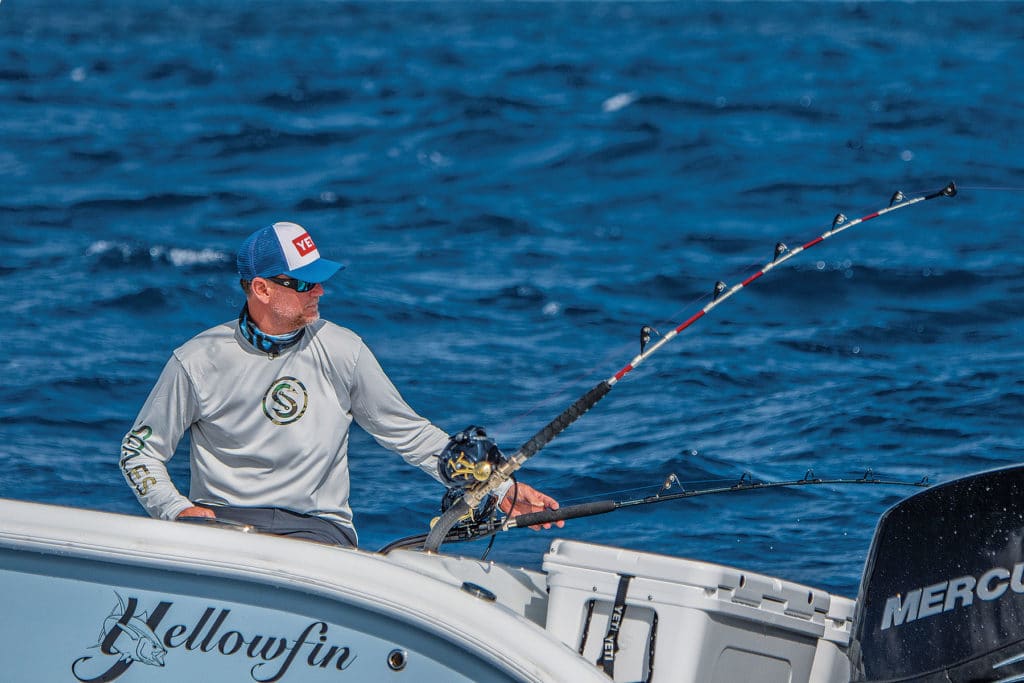
Reel Benefits
Capt. Bouncer Smith (captbouncer.com) uses Hooker reels to daytime-fish for swordfish in 1,500 feet, as well as tilefish in 750 feet, out of Miami Beach, Florida. He tried a production reel but found it had too slow a retrieval rate.
On that off-the-shelf electric reel, “the retrieve rate was 150 feet per minute. My Hooker is over 400 feet per minute,” Smith says. “The difference in that retrieval rate is an hour of fishing time over the course of a day.”
Smith likes to offer his customers the opportunity to fight a swordfish by hand. Swordfish trips on boats offering only non-crankable electric reels can be boring for anglers because the captain and mate do all the work. About all the angler can do is push the button to turn on the motor.
Read Next: Fishing Deep Water for Billfish and Tuna
On Bouncer’s Dusky 33, if an angler doesn’t care to hand-crank the 50 International reel the entire way up, Smith and mate Abie Raymond have the angler fish an 80 International Hooker the entire trip, adjusting the bait position and working the motor when a fish is on. But after the weight reaches the surface and Raymond removes it, the angler can hand-crank the reel for the last 100 feet of line.
“That’s when the game is just getting started,” Smith says. “They can leave the rod in the rod holder and crank all the way, or they can have a Black Magic harness and stand up and fight it the whole way. Ninety percent of our customers are thrilled to hand-crank a swordfish after you take the lead off, but no more than 10 percent finish the fight.
“The most fun we have is kids using the electric reel to bring up fish they could never hand-crank. Also, physically disabled people and very old people use the electric reels to catch yelloweye snappers or black-bellied rosefish for dinner.”
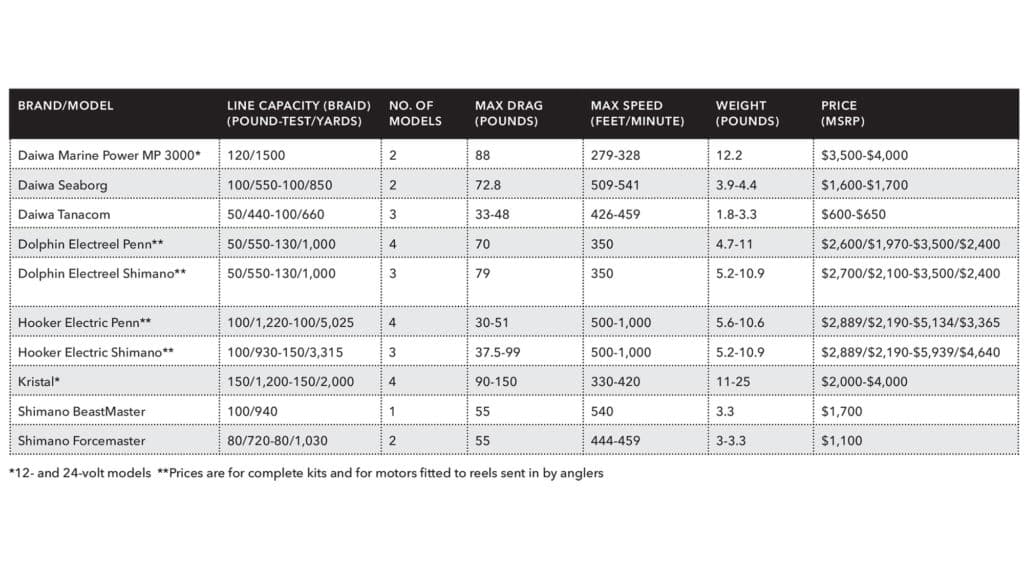
Capt. Nick Stanczyk (floridakeysswordfishing.com) of Islamorada, Florida, uses Penn International Hooker reels for swordfish, queen snapper and other deepwater species. His anglers caught a 600-pound swordfish on a 50-wide Penn, which he fills with 2,000 yards of 65-pound braided line. Stanczyk tagged and released nearly 100 swordfish in 2018.
Like Smith, Stanczyk suggests that anglers who don’t want to hand-crank a fish that’s down 1,800 feet try to reel in the line after the weight is removed, although he adds that “there’s a good chance with a big fish, the fight can be an hour or two.”

